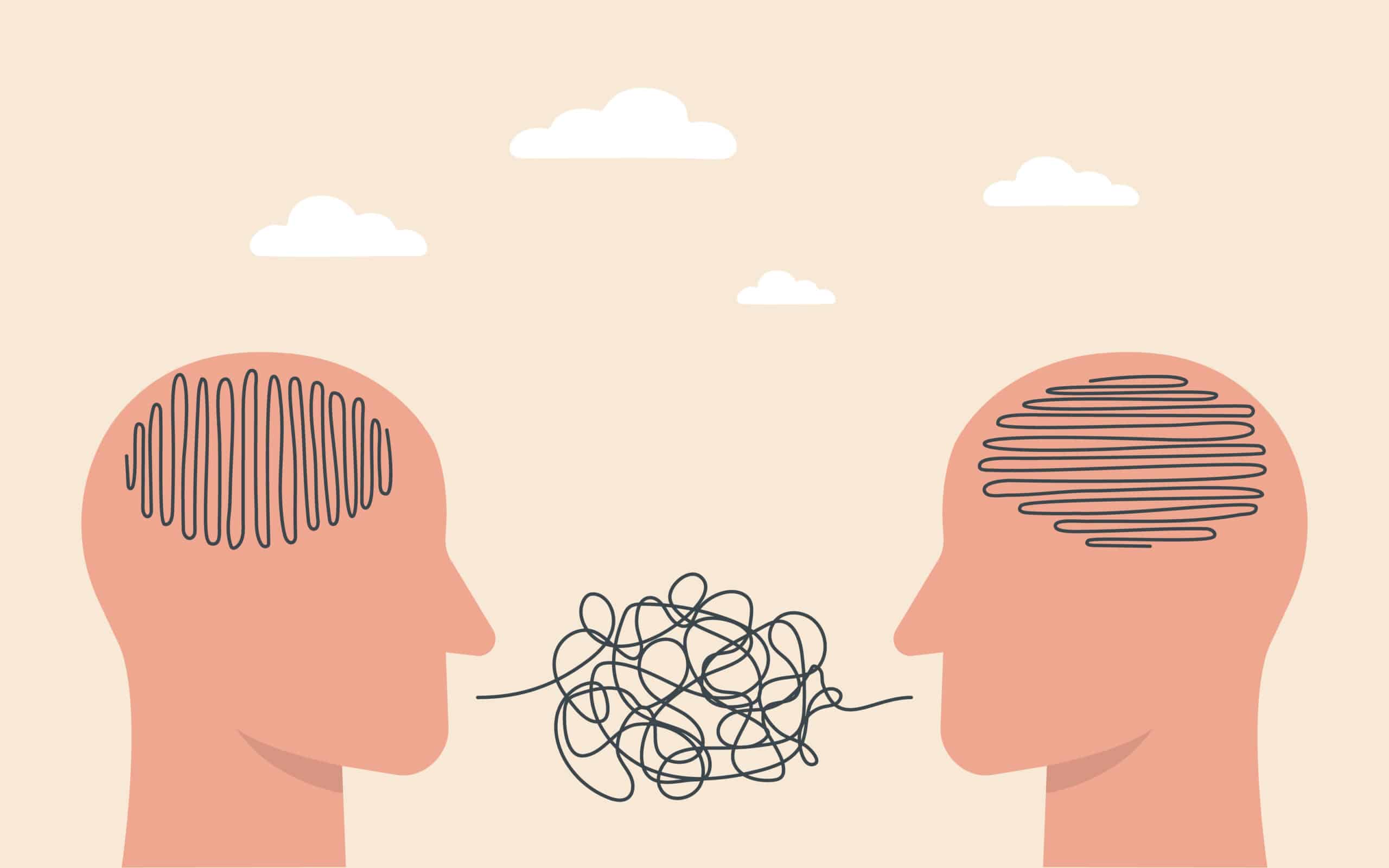TW: This article discusses mental illness and ableism and includes mentions of violence and self-harm.
There has been a significant reduction in the stigma surrounding mental health in recent years, but there is still a long way to go.
While there has been a greater awareness of mental health conditions and the language used to describe them, there remains a lack of understanding. This is evident on social media, where mental health terminology is thrown around haphazardly or reduced to memes.
This casual attitude towards mental health risks promoting misunderstandings and oversimplifications, which can instead increase stigma and drive people away from seeking help.
It’s easy to talk about doing yoga and other self-care activities to manage stress, as you have probably seen in the form of newsletters and infographics from your university.
However, to take that awareness further, it is important to be mindful of the presence of mental health and neurodiversity in daily life. That includes examining how we use clinical language and the impact it can have on ourselves and others.
“Are you acoustic?”
Autism has perhaps gained the most attention and awareness in recent years. Still, there continues to be a lack of understanding about the condition, with ridicule disguised as jokes.
Autistic people occasionally use “acoustic” to mean “autistic” as a form of lighthearted in-joking. However, as some have pointed out, the word has been co-opted into mainstream use as a way of diluting jokes about autistic people.
“Restarted” has seen the same treatment as “acoustic,” though perhaps even more egregious because it is a stand-in for the r-slur.
Autism is a wide spectrum. When used as an ill-intentioned joke, it is reduced to harmful stereotypes that Other an already highly stigmatized group.
In fact, research suggests that individuals with autism may be more vulnerable to traumatic life events, including intimate partner violence. While a mere joke is clearly not equal to acts of violence, both stem from a normalization of othering and misunderstanding of those with autism.
Outside of thinly veiled jokes, there has been a degree of normalization of autism online. Naturally, in some ways, this is a good thing. Being able to openly talk about a topic is key to reducing stigma.
It is certainly a good thing that people have increased awareness about autism. However, the short-form format of social media like TikTok is not the place to gain in-depth information about any subject.
Stimming and social awkwardness, for instance, are sometimes seen as automatic indicators of autism, but anyone can experience either. Simple list videos do not usually acknowledge the wide range of symptoms and the significance of frequency and severity.
Furthermore, the stereotyping and sanitization of autism into something more digestible — either something to laugh at or a quirky character trait — ultimately invalidates the diverse and complex experiences of actual autistic individuals.
Hyperfixation or just an interest?
Perhaps because autism and ADHD have been relatively normalized, social media users commonly misapply “special interest” and “hyperfixation” to generic interests.
Hyperfixations are intense, usually short-term interests. These often take the form of deep investment in a particular task. A major difference between a hyperfixation and a simple interest is intensity. The University of Connecticut explains:
While [hyperfixations] can bring a person a lot of joy, they have the potential to overpower basic needs if they get too intense. There are times when people who are hyperfixating can simply forget to eat, use the restroom, sleep, or otherwise take care of themselves.
A.R. from The University of Connecticut
Even those without ADHD can experience hyperfixation. However, it is important to be cautious with terms commonly used in clinical/psychological contexts. Misapplying clinical terms ignores and invalidates the unique experiences of those with autism or ADHD.
Of course, in many instances it is an honest mistake. Still, this widespread misunderstanding highlights the importance of seeking sources and information outside of social media. Specific, health-related topics can be difficult to convey fully in a minute.
Letting intrusive thoughts win
Calling someone “OCD” for being a stickler for cleanliness or organization has been around long before the current digital age. A term which has gained more traction recently through social media is “intrusive thoughts.”
Intrusive thoughts are most commonly associated with OCD and also occur in PTSD. Anyone can experience intrusive thoughts, but they are generally triggered by high anxiety or stress. Harvard Health Publishing identifies intrusive thoughts as:
- Different from one’s usual thoughts
- Bothersome
- Difficult to control
In addition, intrusive thoughts commonly include embarrassing, violent, and/or sexual content which can cause severe distress.
As a result, the conflation of intrusive thoughts with impulsive thoughts can become dangerous. This usage implies repressed desire, ignoring that intrusive thoughts are intrusive specifically because they are unwanted. Perpetuating this definition can turn people away from treatment by enforcing the belief that bad thoughts equal moral failing.
One example is pOCD, or pedophilia OCD, in which a person obsessively worries about being or becoming a pedophile. These anxieties are completely unrelated to actual pedophilic urges, but these thoughts alone can induce intense anxiety and shame. The same is true for those experiencing intrusive thoughts related to other taboo topics like incest and beastiality.
Intrusive thoughts do not necessarily have to include extreme taboo content. The issue arises when that normalization is turned into hostility towards those with more “questionable” intrusive thoughts.
Convincing those with OCD that thoughts are an accurate reflection of one’s character increases stigma and pushes help away. In addition, misidentification of intrusive thoughts unnecessarily treats mundane thoughts as something strange or bad. This could harm your own self-esteem in the long term.
The double standard of schizophrenia
While “schizo” and “schizophrenia” may be casually thrown around in jokes, schizophrenia continues to be misunderstood and demonized.
Content and comments online continue to portray psychosis and people who experience it as “scary” or something to marvel at.
The video below presents schizophrenia in a typical social media tabloid format. Stock and film footage and animated emojis. Even the audio is called “spooky” and “scary.”
One TikTok user, Schizophrenic.NYC, shared a video on the platform capturing a psychotic episode where they experienced delusions. “Are you even safe to be around kids?” reads the top comment.
In line with the stereotype of schizophrenia as something scary and demonic, another user commented, “I wonder if some people with schizophrenia can hear spirits and get mistaken as having a disorder.”
Similar to intrusive thoughts, this conflation of schizophrenia with demonic possession can be dangerous. And so can the opposite idea of schizophrenic people as somehow more spiritually connected.
Religion can play a positive or negative role for different people with schizophrenia. Comments like this can inadvertently affirm religious delusions, like the belief that one is being controlled by spirits, demons, or religious leaders.
Like any other condition, schizophrenia has a wide range of symptoms. Jokes about being “schizo” or “delulu” ignore the reality of those who experience hallucinations, delusions, and paranoia. They are especially problematic when accompanied by a hostile attitude towards those whose delusions do not match the “quirky” ones in these jokes.
Turning awareness into understanding and empathy
In recent years, especially among Gen Z, there has been an increase in awareness of mental health and neurodiversity. Despite efforts to rethink language related to mental health by many both online and in institutions, insulting and misguided slang continues to be prevalent across social media.
While awareness of mental health and neurodiversity is important, it is only a first step to decreasing stigma. It is crucial to turn that awareness into an understanding of the people these conversations are about and the language we use to have these conversations.
Similar articles:














Harold A Maio
June 2, 2024 at 4:01 pm
—-There has been a significant reduction in the stigma surrounding mental health in recent years
May I offer an alternate view: There has been, thanks to education, a significant reduction in the power of those taught and teaching that prejudice.
Harold A Maio